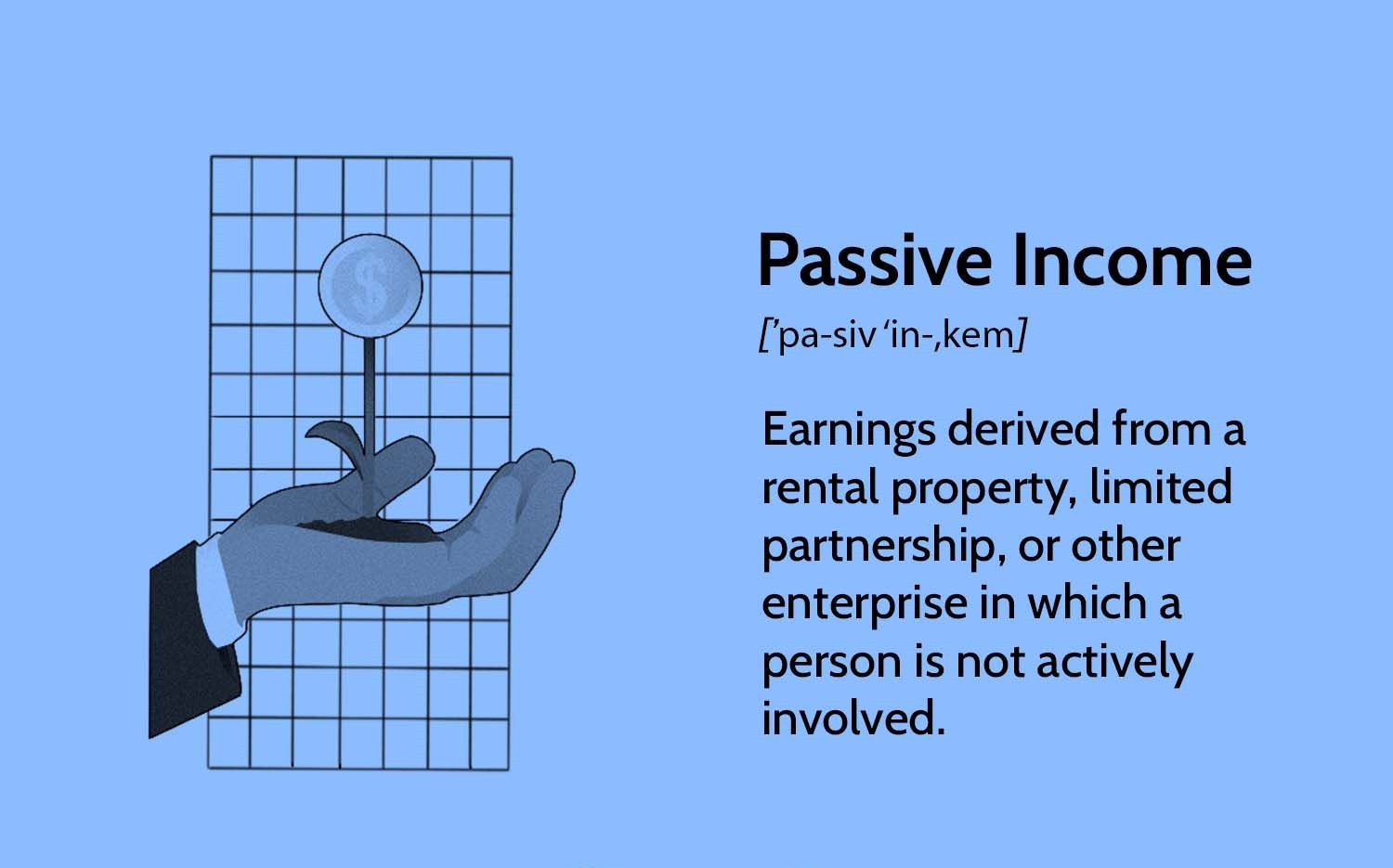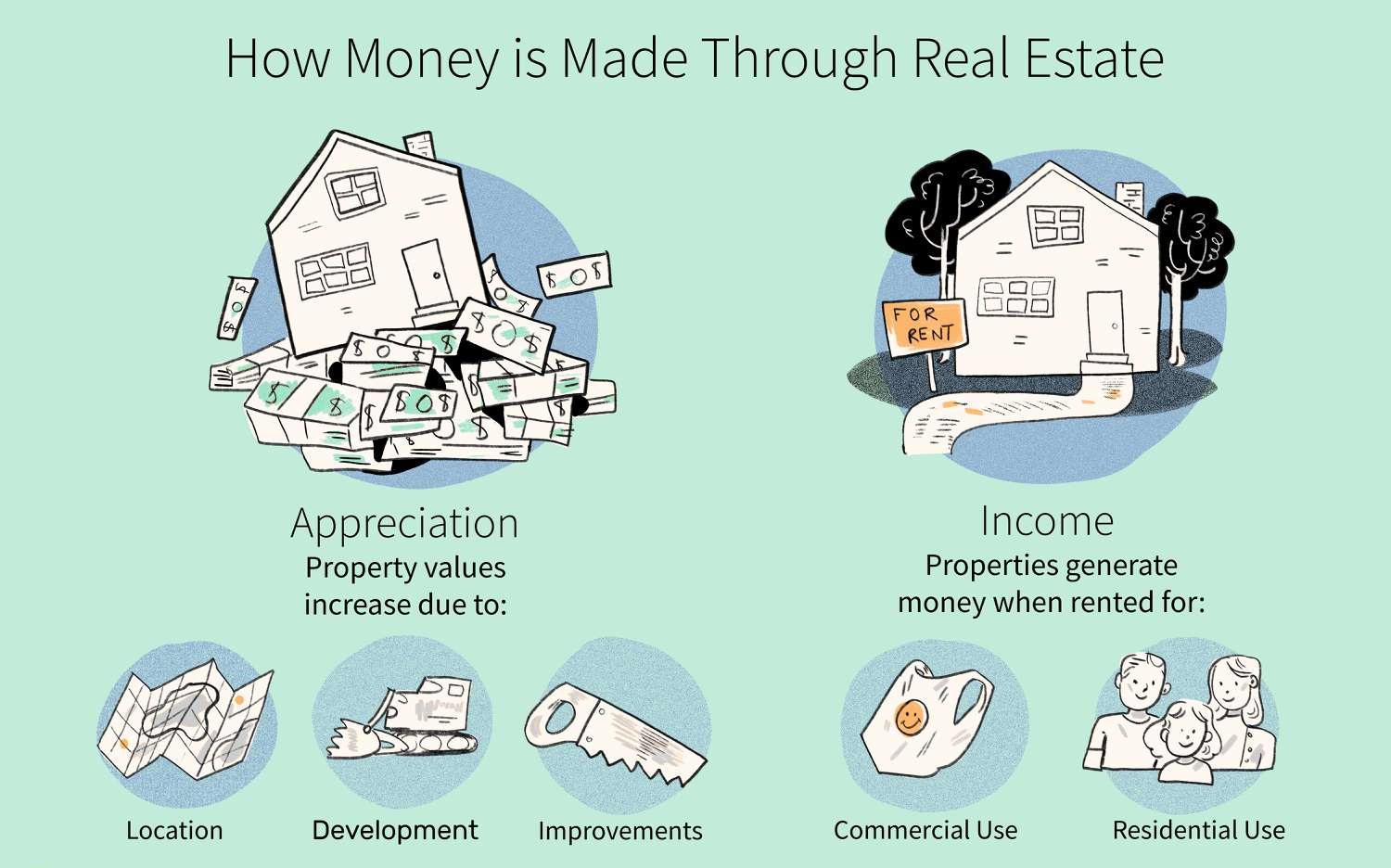Introduction
Welcome to the world of financial technology, commonly known as fintech. In today’s digital age, fintech has emerged as a powerful force revolutionizing the way we manage our finances, make payments, and access financial services.
Fintech refers to the application of technology in the financial sector to provide innovative solutions and improve financial processes. It encompasses a wide range of services, including mobile banking, online lending, digital wallets, robo-advisors, and cryptocurrency.
The rapid advancements in technology have paved the way for fintech to thrive and disrupt traditional financial systems. With the rise of smartphones, internet connectivity, and the availability of big data, fintech has gained momentum and attracted both consumers and investors alike.
The primary objective of fintech is to enhance convenience, efficiency, and accessibility in financial transactions. It aims to bridge the gap between traditional financial institutions and the evolving needs of tech-savvy consumers. By leveraging technology, fintech companies have streamlined processes, reduced costs, and eliminated barriers to financial services, making it easier for individuals and businesses to manage their finances.
The evolution of fintech has had a profound impact on various industries, including banking, insurance, payments, and investments. Traditional financial institutions, once dominant players, are now facing fierce competition from agile fintech startups and tech giants who are reshaping the landscape.
As fintech continues to grow, it is crucial to understand its key components, the challenges it faces, and the benefits it brings. This article will explore the definition of fintech, its evolution, the key components of fintech, examples of fintech applications, the benefits and challenges associated with it, and the future prospects of fintech.
Definition of Fintech
Fintech, short for financial technology, refers to the utilization of technology and innovation to deliver financial services and solutions more efficiently and effectively compared to traditional methods. It encompasses the integration of software, applications, and other technological advancements into financial systems to improve accessibility, speed, security, and convenience.
While the term “fintech” may seem relatively new, the concept has been around for several decades. However, it gained significant traction in recent years due to the proliferation of smartphones, the internet, and the increasing demand for digital services.
At its core, fintech combines finance and technology to revolutionize the way people interact with financial services. It aims to create seamless user experiences, simplify complex financial processes, and enhance financial literacy and inclusion.
Fintech encompasses a wide range of financial products and services, including:
- Digital banking and mobile banking applications, enabling users to manage their finances, transfer funds, and make payments conveniently from their smartphones.
- Online lending platforms that provide individuals and businesses with access to loans and credit without the need for traditional brick-and-mortar banks.
- Payment innovations, such as digital wallets and contactless payment solutions, making transactions faster, more secure, and more convenient.
- Robo-advisors, which utilize algorithms and artificial intelligence to provide automated investment recommendations, creating accessible and affordable investment opportunities for individuals.
- Cryptocurrencies and blockchain technology, offering decentralized and secure methods for digital transactions, eliminating intermediaries and increasing transparency.
These are just a few examples of the diverse range of fintech applications that are transforming the financial landscape.
In summary, fintech combines technology-driven innovation with financial services to make transactions, banking, investing, and other financial activities more accessible, efficient, and user-friendly.
Evolution of Fintech
The evolution of fintech can be traced back to the 1950s when large-scale computers were first introduced to the financial industry. However, it wasn’t until the late 20th century and early 21st century that the true transformation began.
The rise of the internet in the 1990s paved the way for online banking, enabling customers to access their accounts, make transactions, and view their balances remotely. This marked the initial shift towards digitizing financial services.
In the early 2000s, the emergence of e-commerce platforms and online payment systems further accelerated the development of fintech. Companies like PayPal revolutionized the way people made online payments, providing a secure and convenient alternative to traditional methods.
The financial crisis of 2008 served as a catalyst for fintech’s rapid growth. The crisis exposed the vulnerabilities of traditional financial institutions, leading to increased demand for alternative financial solutions. Fintech startups began to emerge, offering innovative services that addressed the shortcomings of traditional banking.
One of the key drivers of fintech’s evolution is the widespread adoption of smartphones. Smartphones revolutionized the way people interact with technology, creating a new era of mobile banking and payment applications. With smartphones becoming an essential part of daily life, fintech companies capitalized on this trend, providing users with seamless and user-friendly financial services on their mobile devices.
Another significant development in the evolution of fintech is the utilization of big data and advanced analytics. Fintech companies leverage data analytics to gain insights into customer behavior, assess creditworthiness, and tailor financial services to individual needs. This data-driven approach enables personalized and targeted offerings, enhancing the overall customer experience.
The integration of artificial intelligence (AI) and machine learning (ML) has also contributed to the advancement of fintech. AI-powered chatbots and virtual assistants are now common in customer service, providing instant support and reducing the need for human intervention. Additionally, ML algorithms are utilized in risk assessment, fraud detection, and portfolio management, increasing efficiency and accuracy in financial processes.
The advent of blockchain technology and cryptocurrencies has disrupted the financial industry even further. Blockchain offers secure and transparent transactions while eliminating the need for intermediaries. Cryptocurrencies provide an alternative form of digital currency, enabling fast and low-cost cross-border transactions.
Overall, the evolution of fintech has been driven by advances in technology, changing consumer expectations, and the need for more efficient and accessible financial services. Fintech continues to evolve rapidly, shaping the future of finance and revolutionizing the way we manage our money.
Key Components of Fintech
Fintech encompasses various components that work together to provide innovative financial solutions. These components combine technology, data, and financial expertise to transform traditional financial services. Here are some of the key components of fintech:
- Digital Banking: Digital banking is a cornerstone of fintech, offering customers the convenience of managing their finances online or through mobile applications. It allows users to perform tasks such as transferring funds, paying bills, checking balances, and accessing financial data, all from the comfort of their devices.
- Payments and Wallets: Fintech has revolutionized the way we make payments. Digital wallets and payment apps provide a secure and convenient method to store payment information and make transactions with just a few clicks. These solutions enable contactless payments, peer-to-peer transfers, and seamless integration with online merchants.
- Online Lending: Fintech platforms have disrupted the lending industry by offering alternative lending options. Online lenders use technology and algorithms to assess creditworthiness, providing quick and accessible financing options to individuals and businesses. This component has opened up new avenues for borrowers who may not have qualified for traditional loans.
- Investment and Wealth Management: Fintech has democratized investment and wealth management by making it accessible to a wider audience. Robo-advisors use algorithms and AI to automate investment recommendations and portfolio management. These platforms provide cost-effective solutions, personalized advice, and real-time tracking, enabling individuals to invest efficiently.
- Blockchain and Cryptocurrencies: Blockchain technology has gained significant attention in the fintech space. It offers a decentralized and secure way to record transactions, eliminating the need for intermediaries. Cryptocurrencies, such as Bitcoin and Ethereum, leverage blockchain technology to enable fast, secure, and borderless digital transactions.
- Insurance Technology (Insurtech): Insurtech focuses on leveraging technology to enhance insurance processes and provide more tailored coverage. From digital claims processing to personalized premium pricing based on data analytics, insurtech aims to simplify insurance interactions, improve underwriting processes, and offer innovative insurance products.
- Regulatory Technology (Regtech): Regulatory technology focuses on using technology to facilitate compliance with regulations in the financial industry. Regtech solutions help financial institutions automate compliance processes, monitor financial transactions for suspicious activities, and ensure data security and privacy.
These key components of fintech work together to drive innovation, automate processes, and improve financial services across various sectors. By combining technology with financial expertise, fintech is revolutionizing the way we bank, make payments, invest, and manage our financial lives.
Examples of Fintech
The fintech industry is filled with innovative solutions that are reshaping the way we interact with financial services. Here are some notable examples of fintech applications:
- Stripe: Stripe is a popular fintech company that provides payment processing solutions for online businesses. Their platform allows businesses to accept payments from customers worldwide, handling complex transactions and ensuring secure payment processing.
- Robinhood: Robinhood is a fintech startup that offers commission-free stock trading through a user-friendly mobile app. It has disrupted traditional brokerage firms by making investing accessible and affordable for novice and small-scale investors.
- Acorns: Acorns is a micro-investing platform that automatically rounds up users’ purchases and invests the spare change. This fintech app encourages users to save and invest their money by making it seamless and effortless.
- Revolut: Revolut is a digital banking platform that provides users with a multi-currency wallet, international money transfers at competitive rates, and access to cryptocurrencies. It offers a convenient and cost-effective alternative to traditional banks.
- SoFi: SoFi is a fintech company that focuses on student loan refinancing and personal loans. They offer competitive interest rates and personalized loan options, providing borrowers with more affordable and flexible lending solutions.
- TransferWise: TransferWise is a fintech platform that specializes in international money transfers. They use a peer-to-peer model to provide users with lower fees and better exchange rates compared to traditional banks, making cross-border transactions more affordable.
- Ripple: Ripple is a fintech company that utilizes blockchain technology to facilitate fast and low-cost international money transfers. It enables financial institutions to settle transactions in real-time, reducing the time and cost involved in cross-border payments.
- Kabbage: Kabbage is a fintech platform that offers small business loans based on real-time business data. By leveraging algorithms and machine learning, Kabbage provides quick access to capital without the need for extensive documentation or collateral.
- Zelle: Zelle is a peer-to-peer payment service that allows users to send money instantly from their bank accounts. It offers a convenient way to split bills, pay friends or family, and send payments securely without the need for cash or checks.
- Wealthfront: Wealthfront is a robo-advisor that provides automated investment management services. It uses advanced algorithms to create and manage personalized investment portfolios based on an individual’s goals, risk tolerance, and time horizon.
These examples highlight the diverse range of fintech applications, from payment processing and investing to lending and international money transfers. Fintech continues to evolve and drive innovations in the financial industry, making financial services more accessible, efficient, and convenient for individuals and businesses.
Benefits and Challenges of Fintech
Fintech has brought numerous benefits to the financial industry and consumers alike. However, it also presents certain challenges. Let’s explore the benefits and challenges of fintech:
Benefits of Fintech:
- Convenience: Fintech has made financial services more accessible and convenient. Consumers can perform transactions, manage investments, and access financial information anytime, anywhere, using their smartphones or computers.
- Cost-Effective: Fintech solutions often offer lower costs compared to traditional financial services. Online platforms typically have reduced overhead expenses, allowing them to provide competitive fees, lower interest rates, and better exchange rates for consumers.
- Improved Access: Fintech has increased financial inclusion by providing services to underserved populations. It enables individuals without access to traditional banking services to open online accounts, access loans, and make digital payments, empowering them economically.
- Enhanced Efficiency: By automating processes and utilizing advanced technologies, fintech has improved the speed and accuracy of financial transactions. Tasks that were once time-consuming, such as loan approval or investment management, can now be completed quickly, reducing paperwork and enhancing efficiency.
- Personalization: Fintech platforms use data analytics and AI algorithms to offer personalized financial recommendations and services. This level of customization enhances the user experience and helps individuals achieve their specific financial goals.
- Innovation and Competition: Fintech has fostered innovation within the financial industry, encouraging traditional institutions to adapt and improve their services. The competition between fintech startups and established institutions leads to better services and options for consumers.
Challenges of Fintech:
- Cybersecurity: The rapid advancement of fintech comes with increased cybersecurity risks. Fintech companies must ensure robust security measures to protect sensitive customer data and prevent unauthorized access or data breaches.
- Regulatory Compliance: Fintech operates in a heavily regulated environment. Companies must navigate complex legal frameworks to ensure they comply with regulations surrounding data protection, anti-money laundering, consumer protection, and privacy.
- Trust and Consumer Adoption: Building trust in fintech services can be a challenge, particularly for individuals who are skeptical of entrusting their financial information to digital platforms. Overcoming this skepticism and encouraging widespread consumer adoption is crucial for the success and growth of fintech.
- Technological Infrastructure: Fintech relies heavily on technology infrastructure, including internet connectivity and reliable networks. In regions with limited access to high-speed internet or with outdated technology, the potential of fintech may be restricted.
- Education and Financial Literacy: Fintech introduces new financial products and services that may be unfamiliar to some individuals. Promoting financial literacy and providing education on fintech solutions can help individuals make informed decisions and fully benefit from these innovations.
- Exclusion and Inequality: While fintech aims to increase financial inclusion, there is a risk of creating a digital divide. Some individuals, particularly those in marginalized communities or with limited technological literacy, may face challenges in accessing and utilizing fintech services.
Overall, the benefits of fintech are significant, including increased convenience, cost savings, improved access to financial services, efficiency gains, and personalized experiences. However, the challenges of fintech, such as cybersecurity risks, regulatory compliance, and building trust, must be effectively addressed for the industry to continue its positive impact on the financial sector and society as a whole.
Future of Fintech
The future of fintech holds immense potential as technology continues to advance and consumer preferences evolve. Here are some key trends and possibilities that can shape the future of fintech:
1. Continued Innovation:
Fintech will continue to innovate and disrupt traditional financial services. Emerging technologies like artificial intelligence, blockchain, and the Internet of Things (IoT) will fuel new advancements in areas such as personalized financial advice, smart contracts, and secure digital identities.
2. Open Banking and Collaboration:
Open banking initiatives are revolutionizing how financial data is shared. Increased collaboration between fintech startups, traditional financial institutions, and technology companies will unlock new opportunities for seamless integration of financial services, providing consumers with a more comprehensive and personalized financial experience.
3. Focus on User Experience:
Fintech companies will continue to prioritize user experience and design, ensuring that financial services are intuitive, user-friendly, and accessible. AI-powered chatbots and virtual assistants will enhance customer support, while user-centric design principles will simplify complex processes and make financial services more approachable to a wider audience.
4. Expansion of Mobile Payments:
The rise of mobile payments will continue, with smartphones becoming the primary mode of financial transactions. Fintech companies will develop innovative solutions to enable secure and convenient mobile payments, leveraging technologies like near-field communication (NFC) and biometric authentication.
5. Greater Integration of Fintech in Developing Countries:
Fintech has the potential to bridge the financial inclusion gap in developing countries. As smartphone adoption and internet access increase, fintech solutions will play a vital role in providing access to financial services, improving financial literacy, and empowering individuals and small businesses.
6. Enhanced Data Analytics:
Data analytics will continue to drive fintech innovations. Advanced analytics and machine learning algorithms will provide deeper insights into customer behavior, enabling the development of more accurate risk assessment models, personalized recommendations, and fraud prevention systems.
7. Evolution of Cybersecurity Measures:
Fintech companies will invest in robust cybersecurity measures to ensure the protection of customer data. Artificial intelligence and machine learning will be utilized to detect and prevent sophisticated cyber threats, while blockchain technology will enhance data security and integrity in financial transactions.
These trends and possibilities signify an exciting future for fintech. As technology continues to advance and consumer demands evolve, fintech will play a pivotal role in shaping the financial landscape, offering innovative solutions, transforming traditional services, and improving financial well-being for individuals and businesses around the world.
Conclusion
Fintech has emerged as a powerful force, revolutionizing the financial industry and transforming the way we manage our finances. It combines technology, innovation, and financial expertise to provide convenient, accessible, and efficient financial services.
Throughout the evolution of fintech, we have witnessed the emergence of digital banking, online lending, payment innovations, robo-advisors, and blockchain technology. These advancements have enhanced convenience, reduced costs, and increased financial inclusion.
Fintech has brought numerous benefits, including improved accessibility, cost-effectiveness, enhanced efficiency, personalized experiences, and innovation. It has empowered individuals and businesses to manage their financial lives more effectively, making transactions faster, more secure, and more convenient.
However, fintech also presents challenges, such as cybersecurity risks, regulatory compliance, building trust, and ensuring equal access for all. Overcoming these challenges is crucial for the continued success and growth of fintech.
The future of fintech looks promising, as technology continues to advance and consumer preferences evolve. The industry will witness ongoing innovation, increased collaboration, a focus on user experience, expansion of mobile payments, and greater integration in developing countries. Additionally, enhanced data analytics and cybersecurity measures will play a crucial role in shaping the future of fintech.
In conclusion, fintech has reshaped the financial landscape, offering innovative solutions that have improved accessibility, efficiency, and convenience. With technology as its driving force, fintech will continue to disrupt traditional financial systems, benefit consumers, and shape the future of finance.

























